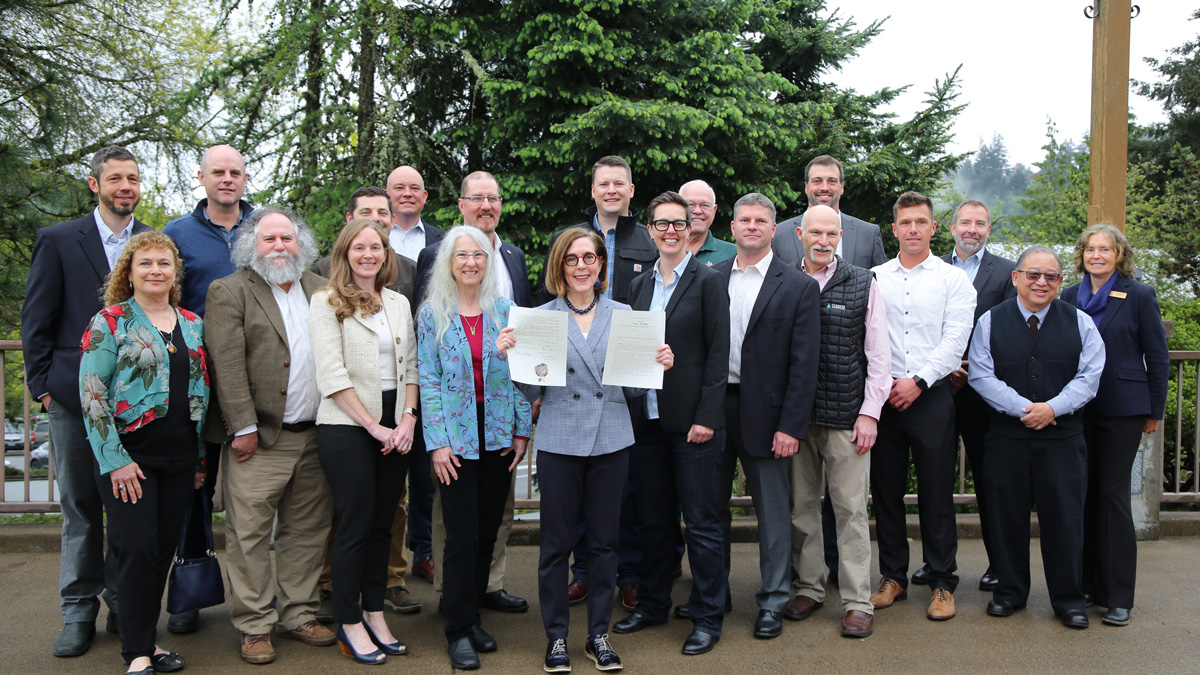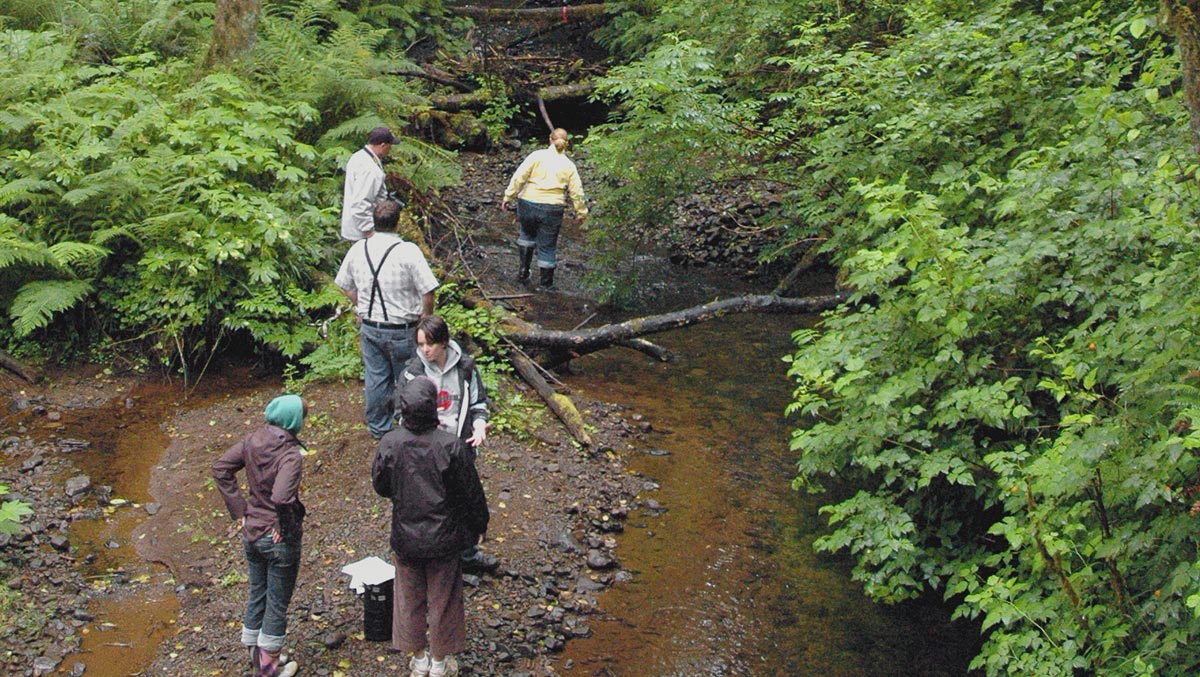Private Forest Accord
Private Forest Accord
The Private Forest Accord is a compromise agreement made between representatives from Oregon’s timber industry, small woodland owners, and prominent conservation and fishing organizations, to modify parts of Oregon Forest Practices Act (OFPA) and forest practice rules in a way that expands protections for fish and amphibians. The changes to the OFPA are designed to avoid, minimize and mitigate the effects that logging and other forest management activities on private forestlands have on these species and the aquatic habitats they depend on.
The Accord was signed in 2021 by 13 conservation and fisheries groups, 11 timber companies and the Oregon Small Woodlands Association, which represents the owners of small forested properties. It outlines key goals that should allow Oregon to receive federal approval for a Habitat Conservation Plan for certain species of fish and amphibians, including all native salmon and trout, four species of salamander and one frog.
Following 16 months of facilitated negotiations, the signatories of the Private Forest Accord proposed state legislation that passed and was signed into law in 2022. This set new standards for forest roads and culverts to remove barriers to fish traveling upstream, and expanded the width of required buffers along streams where logging is prohibited in order to help keep water cold and clean, among other regulatory changes aimed to enhance protections for aquatic habitat.

Upcoming changes to Oregon’s forest practice regulations
The most significant changes to Oregon’s forest practice regulations include:
Expanded stream protections: Required protective buffers where logging is prohibited along streams will be 10% to 100% larger, depending on the stream type and its location, including new protections for non-fish-bearing streams.
Steep slopes: There will be new forest practice regulations related to logging on steep slopes, such as retaining trees in certain areas, with the intention of supporting long-term conservation of stream habitats below the slopes. Modeling is being developed to identify potentially unstable slopes.
Forest roads: News standards will be required for culvert sizes and culvert installation procedures for fish-bearing-streams to ensure fish traveling upstream aren’t blocked by forest roads. Some road-building rules will be modified to focus on minimizing sediment in streams.
Adaptive management: All future changes to Oregon’s forest practice rules regarding protections for forest streams and other aquatic areas will be coordinated through a new Adaptive Management Program, with diverse stakeholder input that will use a science-driven process to analyze the need for any changes.

Proposed timeline for new forest practice rule changes
In February 2022, Private Forest Accord representatives proposed that the Oregon Legislature make certain changes to the OFPA. The following month, the Legislature passed and Governor Kate Brown signed into law Senate Bill1501, which directs the Oregon Board of Forestry to adopt updates to the OFPA; Senate Bill 1502, which creates a new tax credit program for small forest landowners; and House Bill 4055, which establishes future funding through the Forest Products Harvest Tax.
The Oregon Board of Forestry is now tasked with integrating the regulations outlined in the new laws into the OFPA and establishing new forest practice rules for private forest landowners under the following timeline:
July, 2022 – The Oregon Department of Forestry (ODF) completes the draft rules.
August, 2022 – The Board of Forestry holds a special meeting to open a public comment period for the new rules.
October, 2022 – The Board of Forestry holds a special meeting to consider the final rules.
November 30, 2022 – The Board of Forestry adopts the new rules.
July 1, 2023 – Expanded stream buffer requirements go into effect for large private forestland owners (defined as owning 5,000 or more acres of forestland).
January 1, 2024 – All new rules go into effect for all private forest landowners.
What's next?
The next long term process will be developing and pursuing a statewide Habitat Conservation Plan for private forestlands in Oregon.
A Habitat Conservation Plan is a planning document designed to accommodate economic development to the greatest extent possible, by authorizing the limited and unintentional harm or killing of federally-listed threatened or endangered species when it occurs incidentally to otherwise lawful activity. Learn more about Habitat Conservation Plans on the U.S. Fish and Wildlife website.
The Oregon Board of Forestry will oversee the development of a Habitat Conservation Plan for private forests, which it will present to federal fish and wildlife agencies for approval under the Endangered Species Act. The plan is targeted for completion by the end of 2027.
 Oregon Forest Laws
Oregon Forest Laws